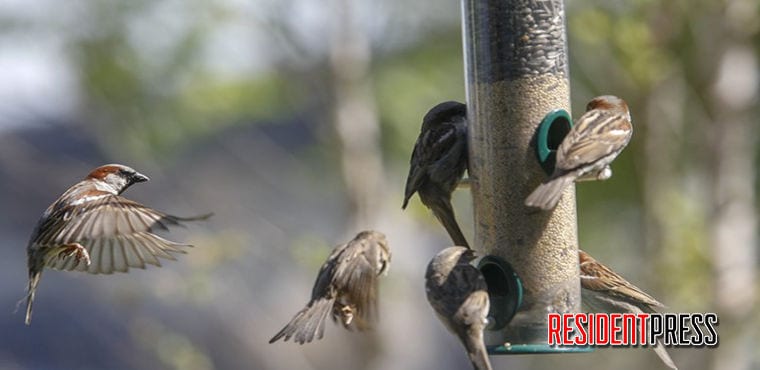LITTLE ROCK – Birdwatchers may notice an increase in the amount of finches visiting their feeders this winter, and with that comes the possibility of a certain bacterial infection that can affect the birds’ eyes.
Karen Rowe, nongame migratory bird program coordinator for the Arkansas Game and Fish Commission, has noticed an increase in calls from concerned birders who have spotted house finches, purple finches and goldfinches with a crusty infection around their eyes.
“The infection is from a disease called mycoplasmal conjunctivitis, or finch conjunctivitis,” Rowe said. “It can cause the birds’ eyes to swell and have a residue that dries up into a crusty layer over the eye. It can lead to blindness, increased predation rates and eventually death.”
Although finches are the primary birds associated with this disease, it has been reported in up to 30 other wild bird species in North America.
According to Rowe, this winter Arkansas has experienced a very high influx of purple finches in addition to the resident house finches and goldfinches seen throughout the state. With the higher population of birds concentrating on feeders, the chances are higher for disease to be transmitted.
Dr. Jennifer Ballard, state wildlife veterinarian for the AGFC, says the bacteria that causes conjunctivitis is spread from bird-to-bird through contact with feeders and other surfaces where infected birds have been.
“With many birds concentrating on a feeder, it only takes one that has a disease to spread it to many others,” Ballard said. “Wildlife diseases such as this are not uncommon, and the best way to combat them is to prevent their spread through manmade sources, such as dirty feeders.”
Ballard says if a person spots a bird at their feeder that shows signs of disease, the best way to help is to remove the feeder for at least two weeks and disinfect it with a bleach-and-water solution before setting it out again with fresh seed.
“While finch conjunctivitis isn’t transmissible to people or pets that are mammals, there are some diseases that can be spread by bird feeders that are, so proper hygiene is very important,” Ballard said.
Wearing rubber gloves when cleaning feeders and making sure to wash and disinfect all items coming in contact with the dirty feeder are highly recommended. It’s also a good practice to clean the surrounding area where the feeder was placed of any hulls, seeds or droppings that may exist.
“It’s a good practice to keep your feeders clean regardless of if you spot a disease,” Ballard said. “When you feed wildlife, you are unnaturally concentrating animals, which can lead to problems if not done properly.”
Ballard suggests people who want to use feeders look for those without platforms or wide perches where droppings can accumulate and help spread bacteria. Wooden feeders, while pretty, can also increase the risk of disease transmission as they are much more difficult to disinfect. Multiple feeders that hold low amounts of food also are preferred, as they help spread birds out instead of piling up on a single feeder. Frequent refilling also will help you remember to give it a good cleaning on occasion.
“It’s also a good idea to keep an eye out for any predators that may begin visiting the area near the feeder, and take the feeder down for a while if this becomes a problem” Ballard said.






